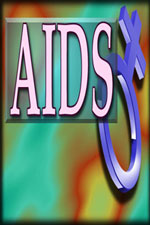[INDEX |
NATIONAL
|
WORLD
|
PERSPECTIVE
|
COLUMNS
|
MONEY
|
ENTERTAINMENT
|
HEALTH
|
TECH
|
LETTERS
|
SUBSCRIBE]
FinalCall.com News
Health & Fitness
HIV/AIDS and the elderly
By Makebra Anderson
Updated May 24, 2005 - 3:15:00 PM
 WASHINGTON (NNPA) - While much of the public’s attention is focused on young people contracting almost half of all new HIV and AIDS cases, there’s a growing HIV/AIDS problem developing among the elderly, a problem that will only grow worse as baby boomers reach retirement.
WASHINGTON (NNPA) - While much of the public’s attention is focused on young people contracting almost half of all new HIV and AIDS cases, there’s a growing HIV/AIDS problem developing among the elderly, a problem that will only grow worse as baby boomers reach retirement.
According to the Centers for Disease Control and Prevention (CDC), there were 1,039,987 reported AIDS cases in 2003 of which, 315,509 (30 percent) were in people over 45. In 1999, the CDC reports that there were 11,056 reported AIDS cases in people 45 and older. In 2001, an estimated 12,176 people over 45 were living with AIDS and in 2003, approximately 13,825.
People of color are still disproportionately affected. Fifty-two percent of older Americans living with HIV/AIDS are either Black or Hispanic, reports the CDC. Among men over 50 living with HIV and AIDS, 49 percent are of color. Among women, 70 percent are of color.
The continued increase in HIV among those over 50 can also be attributed to their living longer, thanks to advanced HIV therapy. According to Bill Rydwels, a 73-year-old man who has been living with HIV for 20 years, who works with the Chicago Forum on HIV and Aging, the perception that people over 50 aren’t sexually active is one of the leading causes of high rates of HIV and AIDS among this group.
“People over 50 come from a generation where the discussion of sex was an under-the-table thing,” he said. “Nobody wants to discuss the sexual habits of older people. It’s the concept that older people stop having sex, and it’s just not a reality.”
According to a study by the University of Chicago, 60 percent of men and 37 percent of women 50 years old and above report engaging in sexual intercourse a few times per month. Rita Strombeck, a physician with Healthcare Education Associates, a group that has recently developed a continuing medical education program for doctors and nurses to recognize HIV/AIDS as a problem among older people, agrees.
“It has to do with the fact that they [older people] don’t consider themselves at risk and they are. One of the problems with doctors and primary care providers is they don’t recognize it’s a problem with older adults, either,” she says.
According to Patricia Hawkins, associate executive director of the D.C.-based Whitman-Walker Clinic, the popularity of medications such as Viagra has also contributed to the surge of HIV and AIDS among this group. “Viagra has contributed a lot to this because there is so much more sexual activity among seniors and yet they are not often using contraception because they aren’t worried about pregnancy,” she said. “I don’t think that our medical community has caught up to the impact of Viagra.”
Because of a general lack of awareness in older adults, they have been omitted from research, trials, prevention and intervention efforts. Nonetheless, because of their age, they may be more at risk than young people. For older women, the use of condoms becomes unimportant after menopause.
Not only are older people at risk, the symptoms of HIV are hard to detect because of aging. Sometimes it’s difficult for physicians to determine if a person has the flu or is infected with the virus. Many of the early symptoms such as night sweats, chronic fatigue, weight loss, dementia and swollen lymph nodes mimic the natural aging process.
The National Association on HIV Over Fifty (NAHOF) says that there are specific ways to target older people.
“Specific programs must be implemented for older adults who need to be informed about the transmission and prevention of HIV, more research is needed to study seniors’ sexual and drug-using behaviors to determine HIV disease progression and treatments and programs aimed at reaching health care and service providers should cover misdiagnoses, treatments, support groups and more.”